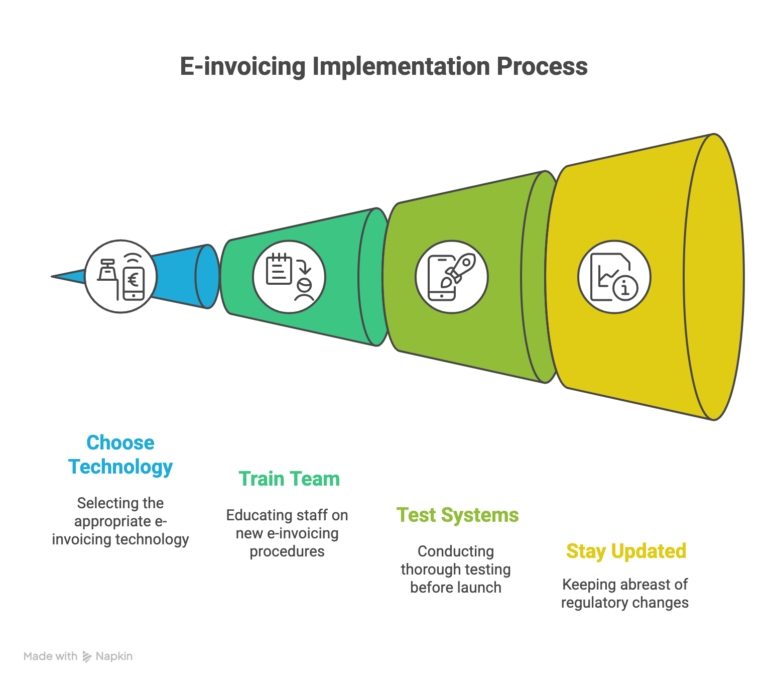Greetings! I'm Aneesh Sreedharan, CEO of 2Hats Logic Solutions. At 2Hats Logic Solutions, we are dedicated to providing technical expertise and resolving your concerns in the world of technology. Our blog page serves as a resource where we share insights and experiences, offering valuable perspectives on your queries.

The Gulf Cooperation Council is undergoing one of its most significant business transformations yet. If you’re running a company in the UAE or Saudi Arabia, you’ve probably heard the buzz about e-invoicing mandates. But what does this really mean for your business, and why should you care?
Here’s the reality: e-invoicing isn’t just another compliance checkbox. It’s a complete reimagining of how businesses handle transactions, and the GCC is leading this charge in the Middle East. With the UAE set to roll out mandatory e-invoicing in 2026 and Saudi Arabia already years into successful implementation, the region is positioning itself as a global leader in digital tax transformation.
In this guide, we’ll break down everything you need to know about e-invoicing in the GCC and how your business can go beyond compliance to thrive.
What Is E-invoicing?
Before we dive deeper, let’s clarify what we’re talking about. E-invoicing (electronic invoicing) is a structured digital system for creating, sending, receiving, and processing invoices in a standardized electronic format. We’re not talking about PDFs sent via email; that’s just digitized paper.
Real e-invoicing involves machine-readable formats like XML that tax authorities can automatically validate and monitor in real-time. Think of it as giving your invoices a digital passport that can be instantly verified by government systems.
Warning: Simply converting your paper invoices to PDF format won’t cut it under the new GCC mandates. E-invoicing requires structured data that integrates with government platforms. Starting your transition early will save you from last-minute compliance headaches.
The GCC E-invoicing Landscape: Who’s Where?
Understanding where each Gulf country stands in its e-invoicing journey helps you benchmark your business and plan accordingly.
Saudi Arabia
Saudi Arabia jumped ahead of its neighbors by launching its e-invoicing system, known as FATOORA, back in December 2021. The Kingdom rolled out implementation in two major phases, and today, thousands of businesses are already operating under the system.
The results? Saudi Arabia has seen dramatic improvements in tax compliance, reduced VAT fraud, and faster processing times for businesses. The system requires businesses to integrate with ZATCA (Zakat, Tax and Customs Authority) platforms, use QR codes on invoices, and follow strict XML formatting standards.
Pro Tip: If you’re operating in both Saudi Arabia and the UAE, learn from Saudi Arabia’s implementation journey. Businesses that adapted early reported 60-80% reductions in invoice processing costs and significantly faster payment cycles.
UAE
The UAE announced its phased e-invoicing rollout starting in 2026, giving businesses a window to prepare. The Federal Tax Authority (FTA) is following a similar model to Saudi Arabia, but with some unique adaptations for the UAE market.
The system will use the Peppol (Pan-European Public Procurement Online) network and PINT (Peppol International Invoicing) format, international standards that make cross-border business easier. The UAE’s approach focuses on accredited service providers (ASPs) who will act as intermediaries between businesses and tax authorities.
Here’s the phased timeline you need to know:
- Phase 1 (Mid-2026): Large corporations and high-volume businesses
- Phase 2 (Late 2026-2027): Medium-sized enterprises
- Phase 3 (2027 onwards): Small businesses and startups
Don't wait until deadlines loom.
Why E-invoicing Matters More Than You Think
You might be wondering: “Is this really worth all the effort?” The short answer is absolutely yes, and here’s why.
The Business Benefits Are Real

Cost Savings That Add Up
Manual invoice processing costs businesses an average of $15-30 per invoice when you factor in printing, postage, storage, and labor. E-invoicing slashes these costs by up to 80%. For a business processing 500 invoices monthly, that’s potential savings of $90,000-180,000 annually.
Faster Cash Flow
Traditional invoicing can mean waiting 30-60 days for payment. E-invoicing reduces this cycle dramatically. Automated systems send invoices instantly, track them in real-time, and can even send automatic payment reminders. Many businesses report cutting their average payment time by 15-20 days.
Fewer Errors, Less Hassle
Human error in manual data entry costs businesses billions globally. E-invoicing eliminates transcription mistakes, duplicate invoices, and missing information. The structured format ensures all required fields are completed before submission.
Enhanced Compliance and Audit Trail
Tax audits become significantly less stressful when every transaction is automatically logged, timestamped, and stored in a government-approved format. Your complete audit trail is built into the system.
The Competitive Edge
Here’s what many businesses overlook: early adopters of e-invoicing gain a significant market advantage. You’ll be able to:
- Work more efficiently with government contracts (which will increasingly require e-invoicing)
- Attract larger corporate clients who prefer or require e-invoicing
- Position yourself as a modern, tech-forward business
- Integrate more easily with international supply chains
Warning: Waiting until the last minute to implement e-invoicing means you’ll face rushed implementation, limited service provider availability, and higher costs. The businesses winning in 2026 are the ones preparing in 2024-2025.
How to Prepare Your Business for E-invoicing Success
The good news? You don’t need to become a tech expert overnight. Here’s your practical roadmap:

Step 1: Assess Your Current Systems
Take stock of how you currently create and manage invoices. Are you using accounting software? ERP systems? Spreadsheets? Understanding your starting point determines your path forward.
Step 2: Choose Your Technology Approach
You have several options:
- Upgrade existing software: Many accounting platforms are adding e-invoicing capabilities
- Integrate with an accredited service provider: These companies handle the technical complexity
- Implement custom solutions: Larger enterprises might need bespoke integrations
Step 3: Train Your Team
Your finance team needs to understand the new processes. Plan training sessions before launch, not during implementation chaos.
Step 4: Test Before Go-Live
Run parallel systems during a transition period. Process invoices both ways until you’re confident the new system works flawlessly.
Step 5: Stay Updated on Regulations
E-invoicing rules will evolve. Subscribe to updates from the UAE Federal Tax Authority and Saudi ZATCA to stay compliant.
Pro Tip: Start with your highest-volume customers first when testing e-invoicing systems. This gives you the most data to identify and fix issues before full rollout.
Need Help Navigating GCC E-invoicing Mandates?
The Technology Behind the Transformation
While you don’t need to be a tech expert, understanding the basics helps you make better decisions.
XML Format: This structured data format allows computers to automatically read and process invoice information. It’s the universal language that makes e-invoicing work across different systems and countries.
QR Codes: In Saudi Arabia (and likely the UAE), invoices must include QR codes that customers can scan to verify authenticity. This combats fraud and gives consumers confidence.
Peppol Network: Think of this as the “highway system” for e-invoicing. It’s an international network that ensures invoices can move seamlessly between different systems and across borders.
API Integration: Your e-invoicing system needs to “talk” to tax authority platforms in real-time. APIs (Application Programming Interfaces) make this communication possible.
Conclusion
Embracing e-invoicing is no longer optional but a strategic imperative that unlocks improved cash flows, reduced fraud risks, and operational agility. By preparing today with comprehensive insights and actionable guidance, GCC businesses can turn compliance into competitive advantage and thrive in the new digital economy.
Weekly Insights
Get our best content delivered to your inbox every week.
FAQ
Will e-invoicing really save my business money?
Absolutely. Most businesses report 60-80% reductions in invoice processing costs after implementing e-invoicing. You'll save on paper, printing, postage, storage, and manual labor. Additionally, faster payment cycles improve cash flow, which has its own financial benefits. The initial investment in technology and training typically pays for itself within 6-12 months.
Can I still send invoices to customers who aren't using e-invoicing?
During transition periods, yes. Most systems will allow you to generate both e-invoices (for compliant customers) and traditional formats. However, as mandates expand, all B2B and B2G (business-to-government) transactions will need to be electronic. It's best to encourage your customers to adopt e-invoicing alongside you.
What happens if I don't comply with e-invoicing mandates?
Non-compliance can result in significant penalties, including fines, business license restrictions, and inability to claim VAT refunds. In Saudi Arabia, penalties can reach up to SAR 50,000 for serious violations. Beyond financial penalties, you may struggle to work with larger clients who require e-invoicing compliance from their suppliers.

Related Articles








